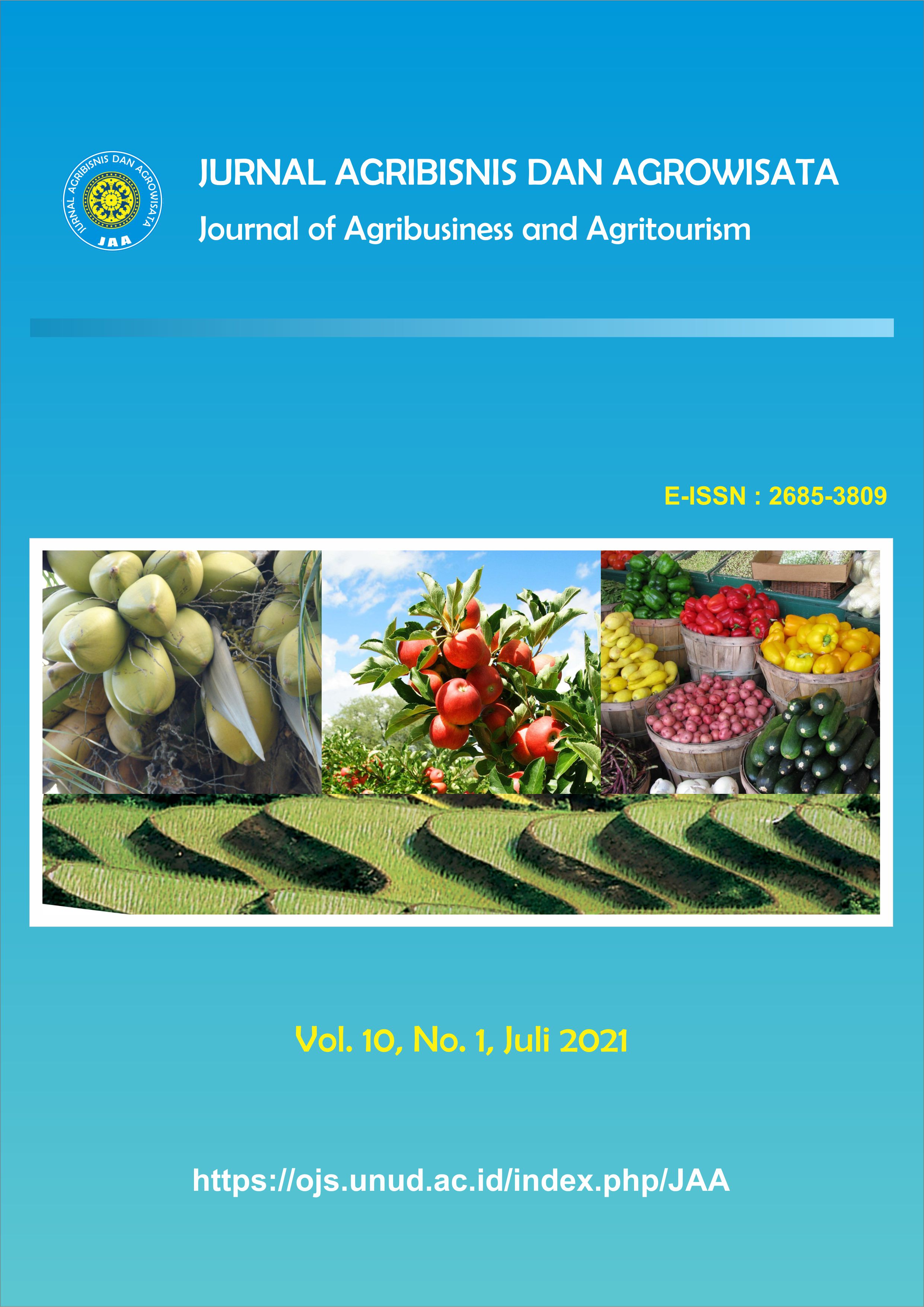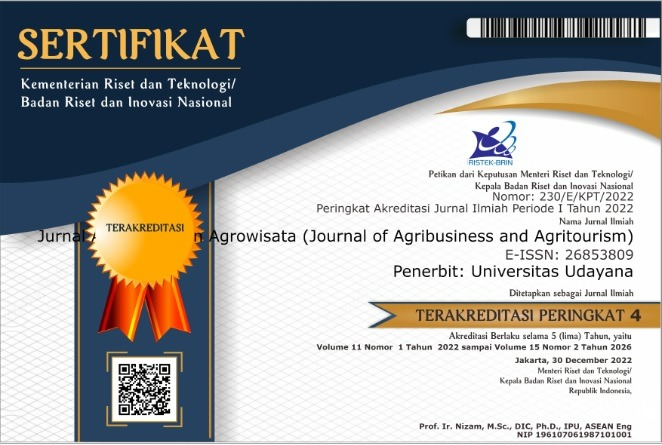Kontribusi Bambu terhadap Pendapatan Perajin Kerajinan Bambu Desa Kayubihi, Kecamatan Bangli, Kabupaten Bangli
Abstract
The Contribution of Bamboo to Bamboo Craftsmen Income in Kayubihi Village, Bangli District, Bangli Regency
The wealth of Indonesian forests is so diverse. Forests provide substantial benefits for society. One of the leading forest commodities is bamboo. Bamboo provides many benefits for local communities. Communities in Kayubihi Village produce various types of bamboo handicrafts as a source of livelihood. This study aims to identify the types of bamboo handicrafts produced by the craftsmen, to analyze the added value of bamboo, and to analyze the contribution of bamboo to the craftsmen’s income in Kayubihi Village. This study uses simple random sampling technique, which involves 86 respondents. The analysis techniques used are both qualitative and quantitative. The results of this study indicate that sokasi has the highest added value among all products, namely Rp 87,774.73 per unit, followed by cake packaging at Rp 24,666.17 per set, and bakul at Rp 18,151.68 per unit. The contribution of bamboo to Kayubihi Village communities’ monthly income is 88%. It is recommended that governments help to market bamboo handicrafts. Craftsmen should continue to run and develop bamboo handicraft production by adding new innovations. Communities should work together for the sustainability of bamboo plants. Further research by students and researchers on the contribution of bamboo to the society’s income in Kayubihi Village is needed.
Downloads
References
Diniyati, D., dan Achmad, B. 2015. Kontribusi Pendapatan Hasil Hutan Bukan Kayu Pada Usaha Hutan Rakyat Pola Agroforestri di Kabupaten Tasikmalaya. Jurnal Ilmu Kehutanan 9(1): 23-31.
Hermawan, Sigit, dan Amirullah. 2016. Metode Penelitian Bisnis Pendekatan kuantitatif dan Kualitatif. Malang : Media Nusa Creative.
Iqbal, M. 2014. Nilai Ekonomi Total Sumberdaya Bambu Studi Kasus di Kecamatan Sajira Kabupaten Lebak, Banten [tesis]. Bogor (ID) : Institut Pertanian Bogor.
Kumaat, G.K.N., Katiandagho, T.M., & Sondakh, M.L. 2015. Kontribusi Usahatani Cengkeh Terhadap Pendapatan Rumah Tangga Petani di Desa Ranaan Baru 2, Kecamatan Motoling Barat. ASE 11(3A): 75-88.
Menteri Lingkungan Hidup dan Kehutanan Indonesia, 2007. Peraturan Menteri Kehutanan Nomor : P.35 / Menhut-Ii/2007 Tentang Hasil Hutan Bukan Kayu Menteri Kehutanan, [pdf]. http://kphl.sim-pdashl.menlhk.go.id (diakses pada tanggal 10 Mei 2018).
Ruauw, E., Katiandagho, T.M., & Suwardi, P.A.P. 2012. Analisis Keuntungan Nilai Tambah Agriindustri Manisan Pala UD Putri di Kota Bitung. ASE 8(1): 31-44.
Setiawan, Nugraha. 2007. Penentuan Ukuran Sampel Memakai Rumus Slovin dan Tabel Krejcie-Morgan: Telaah Konsep dan Aplikasinya. Fakultas Peternakan Universitas Padjajaran.
Senoaji, G. 2009. Kontribusi Hutan Lindung Terhadap Pendapatan Masyarakat Desa di Sekitarnya : Studi Kasus di Desa Air Lanang Bengkulu. J. Manusia dan Lingkungan 16(1): 12-22.
Utama, B.A., Susrusa, I.K.B., & Sarjana, I.D.G.R. 2018. Kontribusi Usahatani Cengkeh terhadap Pendapatan Total Keluarga Petani Cengkeh di Desa Pengeragoan Kecamatan Pekutatan Kabupaten Jembrana. E-Jurnal Agribisnis dan Agrowisata 7(4): 464-473.







